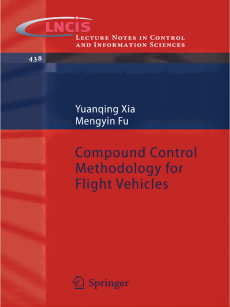内容简介:
Advantages of sliding mode control (SMC). It is well known that SMC is a robust method to control nonlinear and uncertain systems which has attractive features to keep the system insensitive to the uncertainties on the sliding surface. The conventional SMC design approach consists of two steps. First, a sliding manifold is designed such that the system trajectory along the manifold acquires certain desired properties. Then, a discontinuous controller is designed such that the system trajectories reach the manifold in finite time. As a general design tool for control systems, SMC has been well established, and the primary advantages of which are: I) fast response and good transient performance; II) robustness against a large class of perturbations or model uncertainties; and III) the possibility of stabilizing some complex nonlinear systems which are difficult to be stabilized by continuous state feedback laws.
Advantages of active disturbance rejection control (ADRC). In this approach, the error resulting from unmodelled dynamics and disturbances are estimated using an extended state observer (ESO) and compensated during each sampling period. Since uncertainties and disturbances are estimated and canceled via ESO, there is no need for integral control. ADRC was developed by Professor Jingqing Han. The proposed ADRC control system consists of the tracking differentiator (TD),ESO and a nonlinear proportional derivative(PD) controller. It is designed under the assumption of high degree of model uncertainties. The controller is designed to be inherently robust against plant variations. Once it is set up for the problem within a predetermined range of variation in system variables, no tuning is needed for start up, or to compensate for changes in the system dynamics and disturbance. This method, because of its robustness and disturbance rejection capabilities, is particularly suitable for control of uncertain systems.
英文目录:
1 Overview of SMC
1.1 Background
1.2 Recent Development
1.2.1 Discrete Time SMC
1.2.2 Output Feedback SMC
1.2.3 Adaptive SMC
1.2.4 Intelligent SMC
1.2.5 Finite-Time Control
1.2.6 Integral SMC
1.2.7 Higher Order SMC
1.2.8 PID SMC
1.2.9 Time-Verying SMC
1.2.10 Optimal SMC
1.3 Summary
1.3.1 Decoupling Transformation
1.3.2 Construction of Slow and Fast Subsystems
2 Overview of ADRC
2.1 Introduction
2.2 ADRC Strategy
2.2.1 TD
2.2.2 ESO
2.2.3 Nonlinear Combination
2.3 Analysis of ADRC
2.4 Technical Aspects of ADRC
2.5 Practical Application of ADRC
2.5.1 Flight Control
2.5.2 Ship Control
2.5.3 Robot Control
2.5.4 Mission Problem
2.5.5 Power Plant
2.5.6 New Energy
2.5.7 Gyroscope
2.5.8 Motion Control
2.5.9 Vehicle Control
2.5.10 Motor Control
2.5.11 Servo System Control
2.5.12 Other Applications
2.6 New Developments of ADRC over World
2.7 Opportunities and Challenges of ADRC
2.8 Summary
3 Overview of Flight Vehicle Control
3.1 Background
3.2 Attitude Control and Tracking of Spacecraft.
3.2.1 Attitude Control
3.2.2 Attitude Tracking
3.3 Control of Missile
3.4 Guidance and Navigation
3.5 Summary
4 The Descriptions of Flight Vehicle
4.1 Introduction
4.2 Reference Coordinate
4.3 Attitude Description
4.3.1 Euler Angle Description
4.3.2 Quaternion Description
4.3.3 Relationship between Quaternion and Euler Angles
4.3.4 Cosine Matrix Description
4.3.5 Rodrigues Parameter Description
4.4 Attitude Kinematics Equation
4.5 Attitude Dynamics Equation
4.6 Summary
5 SMC for Missile Systems Based on Back-Stepping and ESO Techniques
5.1 Introduction
5.2 Nonlinear Missile Model
5.3 Back-Stepping SMC Design
5.3.1 The Back-Stepping Procedure
5.3.2 SMC
5.3.3 Extended State Observer
5.4 Stability Analysis of Closed-Loop Dynamics
5.5 Simulation Results
5.6 Summary
6 Adaptive SMC for Attitude Stabilization in Presence of Actuator Saturation
6.1 Introduction
6.2 Nonlinear Model and Problem Formulation
6.3 SMC Design
6.3.1 SMC Method
6.3.2 SMC with Adaptive Method
6.3.3 Stability Analysis of the Closed-Loop Dynamics
6.4 Control Design under Input Saturation
6.5 Simulation Results
6.5.1 Attitude Stabilization with Inertia Uncertainties and External Disturbances
6.5.2 Attitude Stabilization with Actuator Saturation,
Inertia Uncertainties and External Disturbances
6.6 Summary
7 Adaptive Nonsingular Terminal SMC for Rigid Spacecraft
7.1 Introduction
7.2 Nonlinear Model and Problem Formulation
7.2.1 Spacecraft Attitude Dynamics and Kinematics
7.2.2 Sliding Mode Surface
7.3 Control Design with NTSMC
7.4 Control Design with Adaptive Method and NTSMC
7.5 Simulation Results
7.5.1 Simulations of Control Design with NTSMC
7.5.2 Simulations of Control Design with Adaptive Method and NTSMC
7.6 Summary
8 Attitude Tracking of Rigid Spacecraft with Uncertainties and Disturbances
8.1 Introduction
8.2 Nonlinear Model and Problem Formulation
8.3 SMC with Adaptive Method
8.4 SMC Design with ESO
8.4.1 SMC Method
8.4.2 SMC with ESO
8.4.3 Stability Analysis of Closed-Loop Dynamics
8.5 Simulation Results
8.5.1 SMC with Adaptive Law
8.5.2 SMC with ESO
8.6 Summary
9 SMC for Attitude Tracking of Rigid Spacecraft with Disturbances
9.1 Introduction
9.2 Nonlinear Model and Problem Formulation
9.3 SMC Design with Disturbance Observer/Differentiator
9.3.1 Prescribed Sliding Mode Dynamics
9.3.2 Smooth Nonlinear Disturbance Observer/Differentiator
9.3.3 Stability 'Analysis of Closed-Loop Dynamics
9.4 SMC Design under Actuator Saturation.
9.5 Simulation Results
9.5.1 Attitude Stabilization with Inertia Uncertainties and External Disturbances
9.5.2 Attitude Stabilization with Inertia Uncertainties,
External Disturbances and Control Input Constraints
9.6 Summary
10 Missile Guidance Law Based on ESO Techniques
10.1 Introduction
10.2 Intercept Strategy
10.3 Basic Control Design
10.4 SMC with ESO
10.5 Simulation Results .10.6 Summary
11 Missile Guidance Laws Based on SMC and FTC Techniques
11.1 Introduction
11.2 Intercept Strategy
11.3 Basic Control Design
11.4 Fault Tolerant Control Design.
11.5 Simulation Results
11.6 Summary
12 Cooperative Attack of Multiple Missiles Based on Optimal Guidance Law
12.1 Introduction
12.2 The Optimal Guidance Law by One Missile on the Plane
12.3 The Optimal Guidance Law of Many to One
12.4 Simulations
12.5 Summary
References
Index

